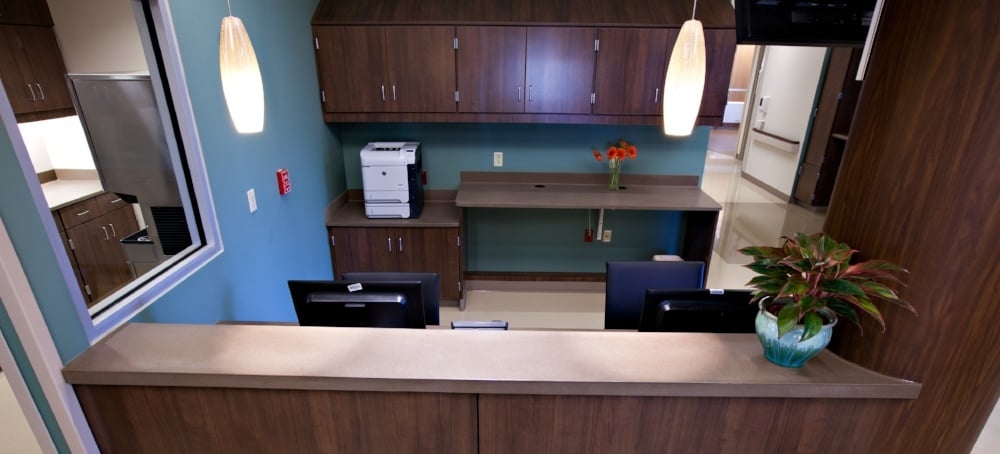The use of copper to ward off infection goes back to Egyptian times, when it was used to sterilize chest wounds.
Now it’s popping up in hospitals in the form of bed linens, patient gowns and countertops, and a paper being released this week centers on a local hospital where copper-infused products were linked to a drop in hospital-acquired infections.
It’s not the first such study done on the subject, but it is the largest clinical trial of copper products in a hospital setting. While copper’s germ-fighting properties are well documented, this study tried to hone in on the role surfaces like countertops and bed linens play in transmitting infection.The results, which are being presented today at a conference organized by the Infectious Disease Society of America, showed an 83 percent decrease in Clostridium difficile, a persistent bacterial infection that has grown to epidemic proportions. There was also a 78 percent decrease in drug-resistant infections, such as methicillin-resistant Staphylococcus aureus, or MRSA, when compared to a control group.
More study is needed, and this 10-month trial did have limitations, such as different types of patients in the comparison groups, and the fact that the tower with the copper products was newer with larger rooms than the control wing in a 1970s-era section of the hospital. It was a retrospective study, rather than one that shows direct cause and effect.
Still, the data build on smaller studies showing the same positive impact of copper-infused products, according to a doctor who reviewed the study as an outside validator. Dr. Costi Sifri, hospital epidemiologist at the University of Virginia Health System, said the data are significant, even with study limitations.
“Hospitals are looking for everything they can do to improve patient safety and reduce transmission of pathogens,” he said. “The idea of something that is always on and easy to implement has a lot of appeal.”
Hospitals are under pressure by both patients and federal health officials to reduce the number of hospital-acquired infections. According to the Centers for Disease Control and Prevention, nearly 650,000 patients contract one of these infections annually in the country.
Sentara Healthcare decided to do the study after the hospital system was approached by two Virginia companies more than four years ago: Norfolk-based EOS Surfaces LLC makes countertops, bathroom sinks, bedside tables and bed rails with a copper product that’s been certified as antimicrobial by the Environmental Protection Agency. Richmond-based Cupron Inc. produces copper-infused bed linens, thermal blankets, patient gowns, towels and washcloths.
Because Sentara was getting ready to build a new tower at Sentara Leigh Hospital, the products were installed in 124 patient rooms. The study compared infections of those patients in 2014 to a control group in a 1970s-era wing of the hospital. After that study was complete, Sentara did another comparison when the second tower of Leigh was constructed with all 250 beds in the new towers and compared them with two other Sentara hospitals that did not have the copper products. That study is finished and the results are expected next year.
Dr. Gene Burke, who is medical director for clinical effectiveness of Sentara, said the results were positive enough that the health system added the linens, countertops and bed rails to Sentara Virginia Beach General Hospital, Sentara Princess Anne Hospital, Sentara CarePlex in Hampton and Sentara Norfolk General Hospital, along with an assisted-living center on Newtown Road in Norfolk. Eventually all their hospitals will have the copper products, and the health system is also looking at using them in long-term-care facilities.
“We were surprised at the magnitude of the improvement,” Burke said.
He said the hospital system works hard at human-based infection controls, such as hand-washing and medical device protocols, but this is something that works outside humans: “You can put it in place and walk away and it continues to work.”
Even before the release of these results, which were published online in the American Journal of Infection Control, the two companies said they had experienced an upswing in the purchase of their products, with 20 hospitals, dental offices and other health clinics now using them, according to Ken Trinder, president of EOS.
“We started with the toughest audience, people trained to be skeptical,” said Chris Andrews, CEO of Cupron.
Patients are taking note, too. When Mary Moore checked into Leigh a year ago for the first of two hip replacements, she noticed the taupe colored sheets, and thought the hospital was trying some kind of high-end linen until someone told her about the copper-infused sheets and bed rails.
“It’s in all the places we touch getting in and out of the bed, like the bed rails, so it’s really well thought out,” said Moore, who had a second hip replacement last week. “If it helps cut infection, I’m grateful for it.”






